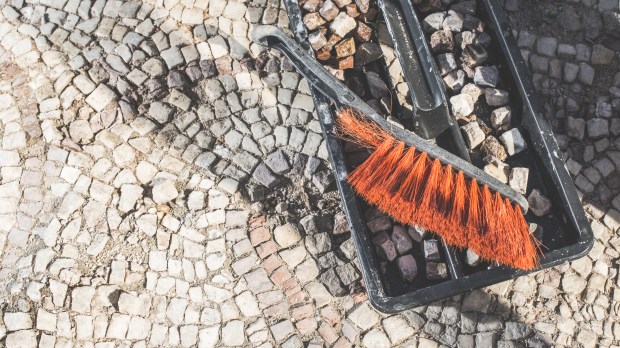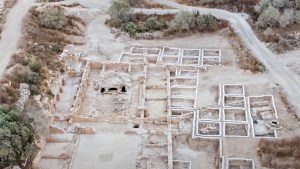Archeological excavations at a site in Cyprus, on the Akrotirio peninsula, have revealed an important 7th-century Christian church complex. The effort, undertaken by the Department of Antiquities of Cyprus, has been ongoing since 2007. Now, after the 12th round of excavations, the site is being recognized for its historical significance.
Akeonews reports the team found the floors were covered in mosaics. Among them, in excellent condition, is a mosaic that bears a Greek inscription. The inscription reads ΚΕ ΒΟΗΘΙ ΤΟΙΣ ΤΟ ΩΝΟΜΑ ΣΟΥ ΦΩΒΟΥΜΕΝΟΙΣ, or “My Lord, help those who honor your name.”
The team focused on the south wing of an enormous complex that included two gigantic church buildings. These structures flank a large 100-meter-long atrium, which also features adjacent living areas. Not far to the north, a similar church structure was found with another atrium, but these have yet to be fully excavated.
The churches
The first church is a three-aisle basilica design that shows a variation on the cruciform style. The building measures 36 meters wide by 29 meters long, with a raised platform, or Holy Bema, in the center. The floors of this church were paved with well-preserved mosaics.
In 2018, the team began work on the second church building, which also included mosaics and another bema. This church bore signs of the prominent Introitus ceremony of pre-sanctified Holy Gifts. The second church also had slightly different dimensions from the first, measuring about 47 meters long and about 20 meters wide.
According to Greek Reporter, one of the most distinctive aspects of the complex is its architecture. The positioning of the buildings and the large quantity of religious decorations has experts believing it was a very important worship site of the 7th century. The site would have been most active during the reign of Emperor Heraclius, who led the Romans to fight the Persians.
Dimitris Triantafyllopoulos, former professor of Byzantine archeology at the University of Cyprus, said of the site:
“This is a monument of martyrdom, a site of burial and worship of holy persons, similar to the site of St. Minas of Egypt.”
Read more about this fascinating discovery at Akeonews.
This discovery only adds to the rich Christian history of Cyprus. As tradition holds, Lazarus traveled to Cyprus after the events of the Gospels, where he became one of the first bishops of the Church.


